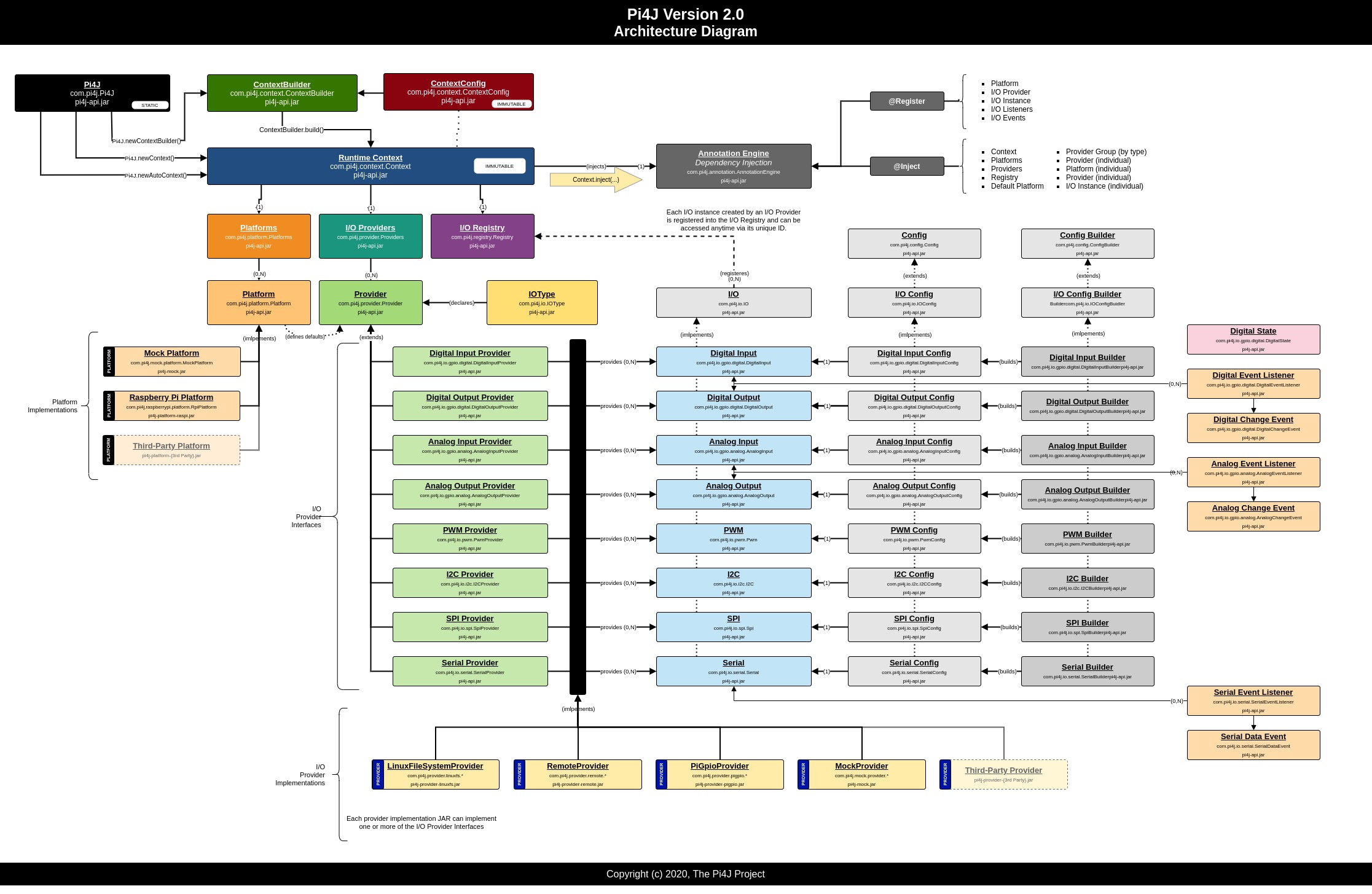You wrote: "Since no specific 'provider' is defined" but some provider is there: ".provider("pigpio-digital-output")". BTW: how do I know what strings you predefined to put in the provider (e.g. to avoid the same strings in my custom implementations)?
The provider implementation is not fully completed yet. We are missing some of the Linux file system provider implementations. Namely "serial", "spi" and "pwm". I believe the plan is to make these the default providers for Pi4J once they are all available. Currently only the "PiGPIO" providers are fully implemented, thus requiring the PiGPIO library on the system. The decision was made to go ahead and release this initial version and let people start playing with it rather than waiting for everything to be finalized which may take months. So at the moment there are no "default" providers for each I/O type, you have to specific which provider to use.
It looks like the documentation web page (https://pi4j.com/documentation/providers/) also needs some work to define the existing implemented providers and their respective ids (unique identifier strings).
I tried to create MCP23017 as my custom provider, but unfortunately I was not successful. The documentation is very limited and there is no complete example of how to create such a provider. Could you please help and create an example of an "advanced IO provider"?
First, let me point out that all providers are implemented as "Pi4J Plugins".
See: https://pi4j.com/architecture/advanced/plugins/
A "plugin" is just a container module that can extend functionality into the Pi4J framework. At the moment the only two extensibility things are Platforms and (I/O )Providers. A plugin can contain any number of platforms and or providers . Lets ignore Platforms for the moment as that is a whole other topic. So in you case you probably just need to create a single plugin that supports both a digital input and digital output provider.
https://github.com/Pi4J/pi4j-v2/tree/develop/plugins
The best place to start might be by looking at the "Mock" plugin and its providers. This illustrates the basic structure and layout without getting into too much implementation details. https://github.com/Pi4J/pi4j-v2/tree/develop/plugins/pi4j-plugin-mock
Next look at the PiGPIO plugin and it's digital input and output providers for a more complete implementation example: https://github.com/Pi4J/pi4j-v2/tree/develop/plugins/pi4j-plugin-pigpio/src/main/java/com/pi4j/plugin/pigpio/provider/gpio/digital
I hope this helps.
Architecture: See: https://pi4j.com/architecture/


Hi,
First of all a big thank you for your great effort in releasing the pi4j v2 library, you did an amazing job.
I'd like to use the MCP23017 as a GPIO provider, but the codes you posted as examples are very simple and in some cases confuse me. For example: https://github.com/Pi4J/pi4j-example-minimal/blob/main/src/main/java/com/pi4j/example/MinimalExample.java
You wrote: "Since no specific 'provider' is defined" but some provider is there: ".provider("pigpio-digital-output")". BTW: how do I know what strings you predefined to put in the provider (e.g. to avoid the same strings in my custom implementations)?
I tried to create MCP23017 as my custom provider, but unfortunately I was not successful. The documentation is very limited and there is no complete example of how to create such a provider. Could you please help and create an example of an "advanced IO provider"?
Many thanks in advance.